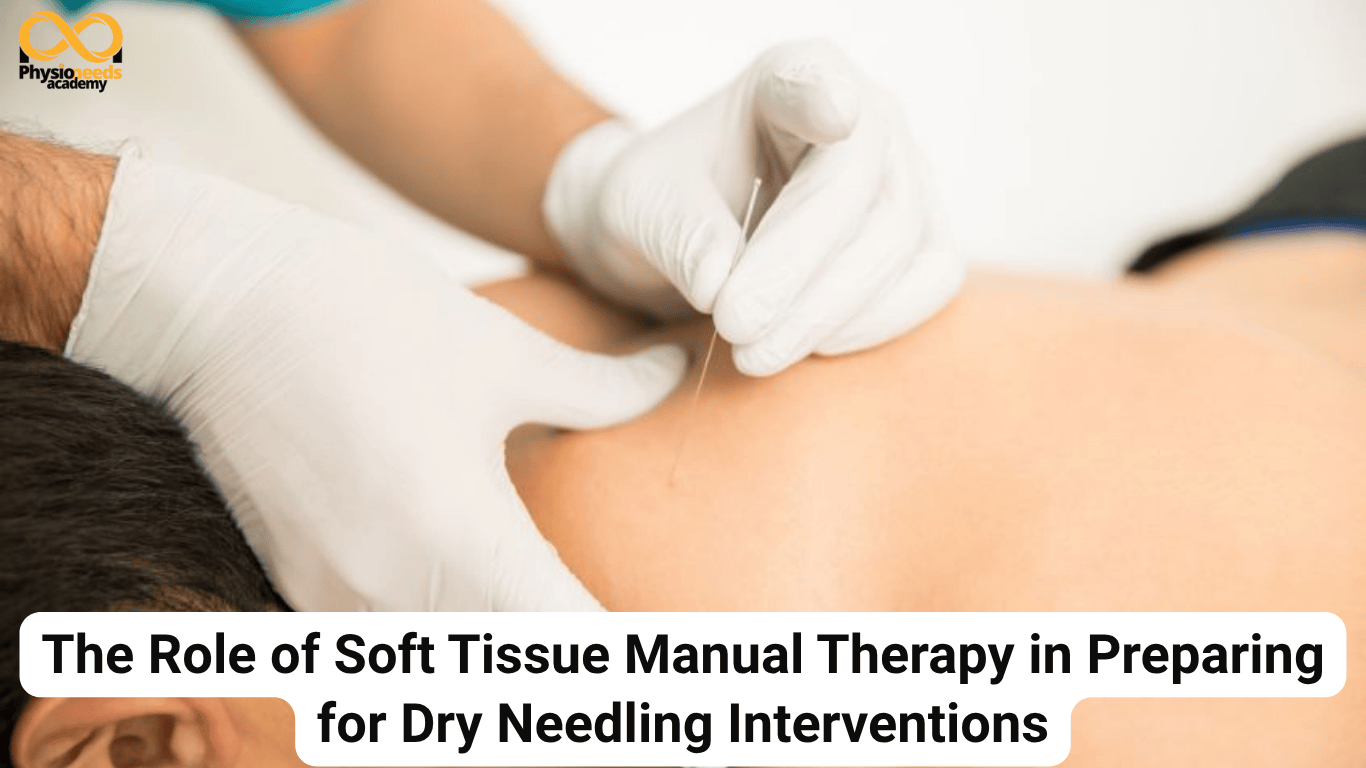There are no items in your cart
Add More
Add More
| Item Details | Price | ||
|---|---|---|---|

Dry needling has become one of the most effective clinical tools for physiotherapists looking to reduce pain, release trigger points, and restore functional movement. But while dry needling is powerful on its own, its effectiveness significantly increases when paired with soft tissue manual therapy. By preparing the tissues before needle insertion, therapists create an optimal environment for better outcomes, reduced discomfort, and longer-lasting results.
In this article, we explore why soft tissue manual therapy matters, how it enhances dry needling interventions, and why combining both techniques is becoming a standard practice in advanced physiotherapy treatment.
Soft tissue manual therapy refers to hands-on techniques applied to muscles, fascia, ligaments, and connective tissues. These methods help improve circulation, reduce muscle tension, break down adhesions, and promote neuromuscular relaxation. Common techniques include:
1. Enhances Patient Comfort and Reduces Needle Pain
When tissues are excessively tight, hypersensitive, or inflamed, needle insertion may be more uncomfortable. Manual therapy helps reduce this sensitivity by relaxing superficial and deep structures.
This ensures:2. Increases Blood Flow and Tissue Warm-Up
Manual therapy stimulates microcirculation, helping increase oxygen and nutrient delivery to the muscles.
Warm, pliable tissue:3. Allows Therapists to Locate Trigger Points More Accurately
Soft tissue palpation is central to trigger point identification. Through manual therapy, the physiotherapist can assess:
4. Reduces Protective Muscle Guarding
Many patients experience involuntary muscle guarding due to pain or stiffness. Manual therapy techniques—especially myofascial release and gentle mobilization—help calm the neuromuscular system.
Once the muscles relax:1. Improves Tissue Mobility
Restricted fascia and tight muscles can limit the effectiveness of needle penetration. Manual therapy helps free up adhesions and improve glide, allowing the needle to reach deeper myofascial layers with less resistance.
2. Primes Neuromuscular Activation Trigger points often cause dysfunctional muscle activation patterns. Manual therapy helps:
3. Supports Better Clinical Outcomes When soft tissue manual therapy is used before dry needling, patients often report:
Research supports that soft tissue mobilization enhances metabolic activity in muscles and decreases sympathetic nervous system activity. At the same time, dry needling disrupts dysfunctional motor end plates and stimulates a healing response. When used together, they create a synergistic effect:
Athletes, individuals with chronic pain, postural dysfunction, or muscle tightness often benefit significantly from this approach. For physiotherapists, integrating soft tissue manual therapy with dry needling enhances treatment outcomes and elevates overall clinical success.
With the rising demand for effective musculoskeletal interventions, physiotherapists who combine manual therapy and dry needling gain a competitive advantage. Mastery of both techniques helps practitioners: